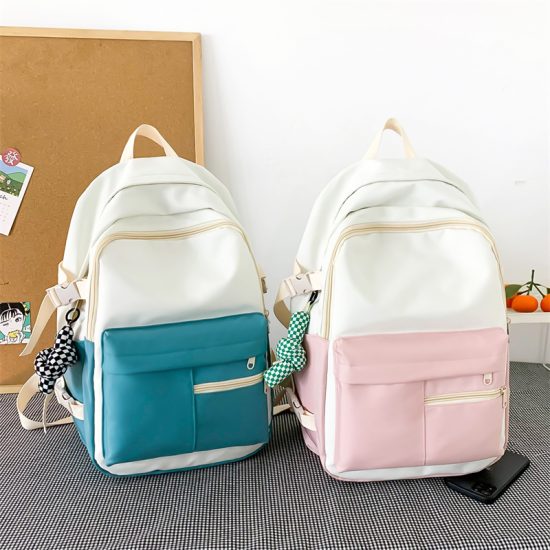When it comes to student health and well-being, the school bag they carry can play a more significant role than you might think. Improperly designed or overloaded school bags can lead to a range of health issues, including back pain and poor posture. In this article, we’ll explore the importance of ergonomics in school bags and how choosing the right one can significantly impact a student’s health.
Understanding Ergonomics:
Ergonomics is the science of designing products and environments to optimize human well-being and performance. When it comes to school bags, ergonomics refers to the design features that ensure comfort, efficiency, and safety during use.
The Consequences of Poorly Designed Bags:
Carrying a heavy and poorly designed school bag can have detrimental effects on a student’s health:
- Back Pain: One of the most common complaints among students is back pain. Carrying a heavy bag that’s not ergonomically designed can strain the muscles and spine, leading to discomfort and pain.
- Poor Posture: An ill-fitting or unbalanced bag can force students to adopt awkward postures to compensate for the weight. Over time, this can lead to poor posture and musculoskeletal problems.
- Neck and Shoulder Strain: Carrying a bag with narrow or non-padded straps can cause strain on the shoulders and neck. This can result in discomfort and even injury.
Choosing an Ergonomic School Bag:
To mitigate these health risks, it’s crucial to choose a school bag that prioritizes ergonomics:
- Padded Shoulder Straps: Look for a bag with wide, padded shoulder straps. These distribute the weight more evenly and reduce pressure on the shoulders.
- Adjustable Straps: The bag should have adjustable straps to ensure a proper fit for students of different heights.
- Chest and Waist Straps: Some bags come with chest and waist straps that help distribute the weight even further and stabilize the bag, reducing the strain on the back.
- Padded Back Panel: A bag with a padded back panel provides extra comfort and helps protect the spine.
- Weight Distribution: Choose a bag with multiple compartments to help distribute the weight evenly. This prevents heavy items from causing discomfort.
- Proper Sizing: Ensure the bag is the right size for the student. A bag that’s too large may encourage over-packing, while a small bag may not hold all necessary items.
- Quality Materials: Look for bags made from durable, lightweight materials that won’t add unnecessary weight.
Promoting Healthy Habits:
In addition to choosing an ergonomic school bag, students should also be educated about the importance of packing their bags sensibly. Encourage them to prioritize essential items, distribute the weight evenly, and use both shoulder straps to avoid muscle imbalances.
In conclusion, the impact of ergonomics on student health cannot be overstated. A well-designed, ergonomic school bag can help prevent discomfort, pain, and long-term health issues caused by poor posture and heavy loads. Parents and students alike should prioritize ergonomics when selecting a school bag to ensure a healthier and more comfortable educational experience.


